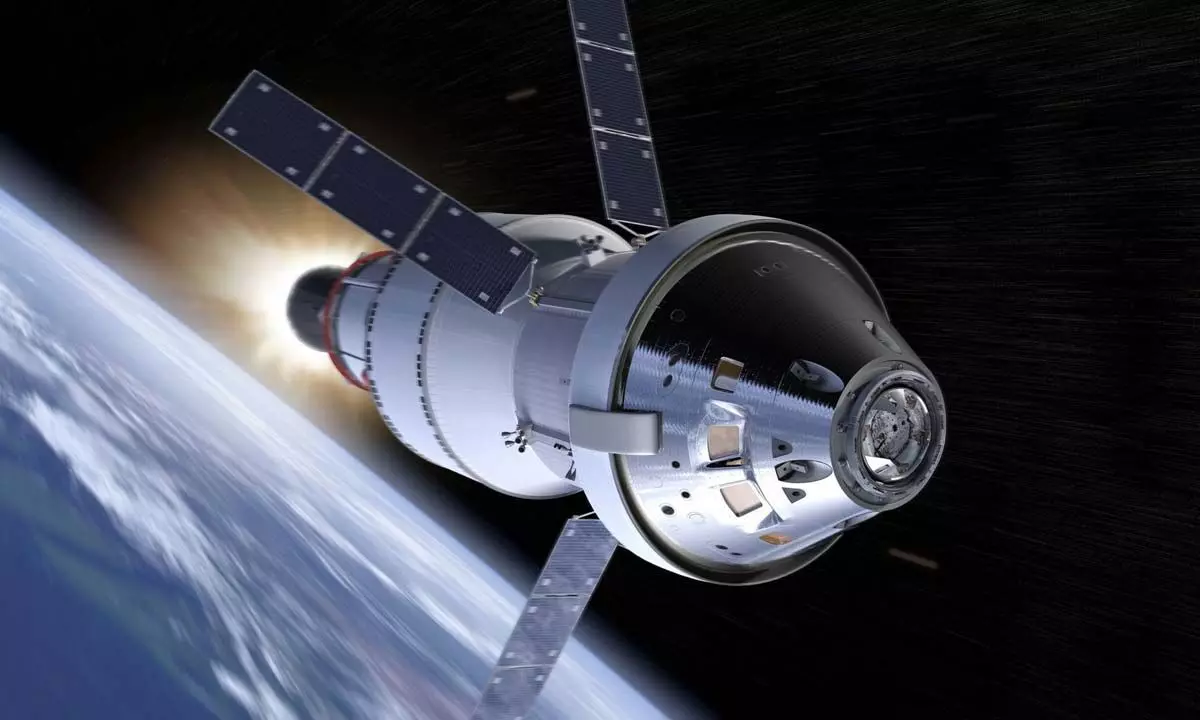Live
- They always want me to win, and now I feel lucky to have been offered a story like ‘Zebra’: Satyadev Kancharana
- ‘Democracy first, humanity first’: PM Modi in Guyana's parliament on two countries' similarities
- PKL Season 11: Telugu Titans register third straight win to top standings
- Is Pollution Contributing to Your COPD?
- NASA Unveils Underwater Robots for Exploring Jupiter's Moons
- Additional Central forces arrive in violence-hit Manipur
- AR Rahman and Saira Banu’s Divorce: Legal Insights into Common Issues in Bollywood Marriages
- 82.7 pc work completed in HPCL Rajasthan Refinery area: official
- Curfew relaxation extended in 5 Manipur districts on Friday
- Tab scam prompts Bengal govt to adopt caution over fund disbursement
Just In
NASA prepares for humanity’s first return to Moon in over 50 years


In December 1972, when most of us were not even born, the US successfully attempted its last crewed moon landing with Apollo 17, the 11th and final mission of NASA's Apollo programme.
New Delhi: In December 1972, when most of us were not even born, the US successfully attempted its last crewed moon landing with Apollo 17, the 11th and final mission of NASA's Apollo programme. Commander Gene Cernan and Lunar Module Pilot Harrison Schmitt walked on the Moon, while Command Module Pilot Ronald Evans orbited above. Launched on December 7, 1972, the mission broke several records for crewed spaceflight, including the longest crewed lunar landing mission (12 days, 14 hours).
It also broke greatest distance from a spacecraft during an extravehicular activity of any type (7.6 km), longest total duration of lunar-surface extravehicular activities (22 hours, 4 minutes), largest lunar-sample return (approximately 115 kg) and longest time in lunar orbit (6 days, 4 hours).
Since then, NASA has not recreated the magic and now aims to make history by sending astronauts to explore a region near the Moon’s South Pole.
In 2022, Artemis I sent an uncrewed Orion to lunar orbit and back late last year. Artemis II is slated to send four astronauts -- three from NASA and one from Canadian Space Agency (CSA) -- around the moon in late 2024 or 2025.
Following two Artemis test missions, Artemis III will mark humanity’s first return to the lunar surface in more than 50 years.
Earlier this month, the US space agency pushed back its manned Artemis mission to the Moon to no earlier than September 2026 that will send the first woman and first person of colour on the lunar surface.
NASA Administrator Bill Nelson said in a statement that they have learned a lot since Artemis I, and the success of these early missions relies on “our commercial and international partnerships to further our reach and understanding of humanity’s place in our solar system”.
“Artemis represents what we can accomplish as a nation - and as a global coalition. When we set our sights on what is hard, together, we can achieve what is great,” he added.
This is how NASA plans to achieve the manned Moon landing, and then prepare the humanity to arrive on Mars. Over the course of about 30 days, the Artemis III astronauts will travel to lunar orbit, where two crew members will descend to the surface and spend approximately a week near the South Pole of the Moon conducting new science before returning to lunar orbit to join their crew for the journey back to Earth.
The crew of Artemis III will ride to lunar orbit aboard the Orion spacecraft, where Orion will dock with the Starship human landing system in preparation for their journey to the lunar surface. Orion is the only spacecraft capable of returning crews to Earth at lunar reentry velocities.
Two crew members will board the SpaceX Starship Human Landing System in lunar orbit and descend to the surface where they will collect samples, perform science experiments, and observe the lunar environment before returning to orbit aboard the Starship HLS, according to NASA.
The crew members will wear Axiom Space's advanced spacesuit as a one-person spacecraft that will protects them from the extreme environment of space while they are are performing moonwalks on the Artemis III mission.
The agency has identified 13 candidate landing regions near the lunar South Pole. Each region contains multiple potential landing sites for Artemis III, which will be the first of the Artemis missions to bring crew to the lunar surface.
Through Artemis, the agency will establish a long-term presence at the Moon for scientific exploration with its commercial and international partners, learn how to live and work away from home, and prepare for future human exploration of the Red Planet.

© 2024 Hyderabad Media House Limited/The Hans India. All rights reserved. Powered by hocalwire.com






